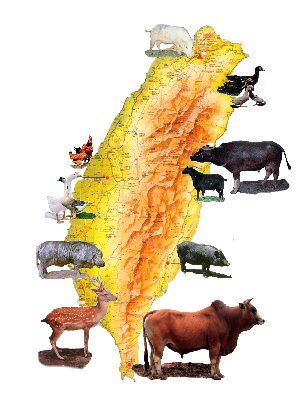

|
 |
種原基因之保存、繁衍與利用為本土畜牧資源之一,配合農業觀光的拓展,畜產資源調查、規劃與開發利用是畜產研究的重要課題。值此農業結構轉變時機,期望此一網站能給各界人士認識本土家畜禽生產特性與農民新的畜牧經營理念。
畜牧業原為農村副業,但因品種的改進和企業經營模式的推廣,今日的畜牧事業已形成台灣農業之重要產業,其經營已由副業邁向專業企業化經營。本土畜產種原有耐熱性、耐粗性、抗病性、早熟性、多產性和特殊風味性的特質,因此加強研究這些種原特性,並設法融入現有的經濟生產體系,不僅可使我國成為亞熱帶畜產科技國,更確保我國固有的珍貴基因資產。台灣的家畜禽族群之繁衍模式,需要社會的每一份子來參與並提供意見。
Conservation
and utilization of genetic resource of local breeds is one of research
missions in animal sciences as part of continued agriculture. There are
four major tasks in the establishment of animal germplasm conservations;
collection, maintenance, evaluation, and utilization. Germplasm may be
defined as the total genetic diversity of a species. Continued increases
in animal production require improved varieties, and animal improvement
is certainly dependent upon genetic diversity. Germplasm preservations
maintain portions of this diversity to meet the needs of the animal
breeders and producers, sometimes even to serve out society from a
culture aspect.
The local
breeds usually has a smaller body size, slower growth rate and less lean
meat content but had one or more adapting characteristics to their
living environment in the past, such as prolificacy of Taoyuan pig, heat
tolerance of yellow cattle, disease-resistance of water buffalo,
twinning of black goat, prolific laying ability of Tsaiya duck, roughage
tolerance of Chinese goose, meat flavor of country chicken, and early
maturity of miniature pig. They have lived on the same piece of earth
with us for many years but they need to face the fate of elimination
from the market-place due to less production values and interbred with
other exotic varieties frequently. Taiwan Livestock Research Institute,
included her animal propagation stations and research stations together
with universities' Animal Science Department under financial support in
part from the Council of Agriculture, Republic of China, have conducted
the nation-wise project of animal germplasm conservation program to save
these native animals since 1987. |

